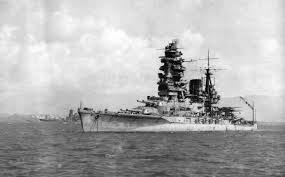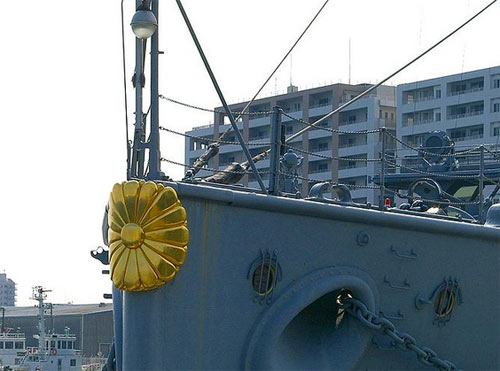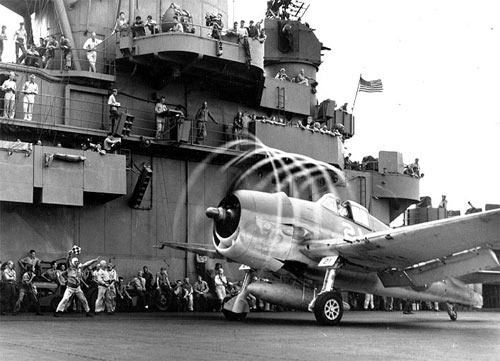Misunderstandings

I was going to introduce you to Edward Smith Gilfillen, last XO of the Nagato, this morning but I got wildly sidetracked by an extraordinarily vivid dream I had in the second sleep of the night, deep in the inky darkness of the country.
I was back in Yokosuka. I swear, it was a full-on Technicolor montage of people and places I knew, all jumbled together. It started in a Navy sedan, traveling from Atsugi. I realized suddenly I did not have my wallet or ID.
I was in deep kimchi, if I may be permitted the mixed geographic metaphor, in a strange land.
I realized I was to attend a conference in Yoko, and the familiar entrance to Fleet Activities Yokosuka rolled by, and the steep low green hills, pockmarked with the defensive tunnels dug during the war. Then the scene in the headquarters, and the vision of some people whom once were part of my life and now are in an entirely different one.
The conclusion of the dream came with the rising light through the glass of the back door, but I was looking back at the base from a rusting oil storage bunker on the shore opposite Buoy One, where IJN Nagato had been moored when the American Fleet arrived in the Sagami Wan, confronted by the last battleship of the enemy.
The Americans were startled by the appearance of the dreadnaught, but Nagato was there to witness, not fight. The Americans steamed warily past. There was no telling what was going to happen to those arriving in the homeland of a fierce and implacable foe.
Five days after the surrender, Captain Sugino Shuichi at last arrived to assume command of Nagato. He would have been assuming command when Mac Showers visited, and they could have met even as articles from the ship were being appropriated by the Americans as souvenirs. On the seaplane flight from Tokyo Bay to Guam, the pilot diverted from the direct route and overflew the capital of the defeated Japan.
Mac told me he could still smell the smoke from the fires that still burned from the last attack.
Shuichi was an officer of considerable combat experience and distinction, and now he was preside over the surrender of Japan’s last operational ship-of-the-line.
That day of formal capitulation was only twelve days later, but before then, there was one thing Sugino could do to mitigate some of the sting of capitulation.
With surrender imminent, he had a sudden recollection of the fact that a lifeboat of the Czarist Russian battleship Orel was still displayed at Eta-jima Naval Academy, the Japanese bastion of tradition whose pride was as resolute as that of Annapolis. The lifeboat was a constant reminder to the Japanese midshipmen of the greatest moment of their Naval history: the victory of Admiral Togo over the forces of the Czar in the Tsushima Strait, the first time a colonial power had been vanquished by a rising Asian nation.
Now, it was the Japanese fleet doing the surrendering, and Sugino did not want to leave `trophies’ for the Americans to exhibit in Annapolis. He sent word to gave orders to remove the imperial chrysanthemum crest from Nagato and had it burned on the afterdeck. It took nearly all of a day for the large crest to burn.

(A seal similar to that worn by Nagato, this one adorning the bow of Admiral Togo’s Mikasa, flagship at Tsushima. Now a memorial ship, the Americans stripped the land-locked ship of its weapons and made it into a dance club during the Occupation).
That collision of pride and humiliation naturally led to misunderstandings. A pal wrote me yesterday with a sea story from the agonizing weeks of transition.
Sid wrote: “Once upon a time in an O’Club in Okinawa, VQ-1 was flying VADM Frederic Bardshar, JR, the Commander of Task Force 77 from Vietnam to Atsugi, Japan, in an EA3B. He was a great guy and a big man, probably 6’3 or 4″. He was an aviator who flew and fought in WWII, becoming an air ace at the Battle of Leyte Gulf where he shot down eight Japanese aircraft in his F-6 Hellcat fighter. “

(F6F Hellcat preparing for deck launch).
“The EA3B pilot, navigator, and I went with him to one of the USAF Officer Club for dinner – in our flight suits. The USAF club managers didn’t want to let us in, But VADM Bardshar noted that he saw USAF officers in the club in flight suits.”
Club manager: “but they are on alert duty.”
VADM Bradshar: “So are we, right out of Danang Air Base just a few hours ago.”
“OK.”
“While we were having dinner, he told us about that day aboard Missouri. Immediately after the signing he was assigned to Shore Patrol in Yokosuka. He and his armed guards walked out the gates and never saw a live person on the streets. He reported that back to his seniors upon return to the base and was told that it wasn’t too surprising since the Japanese government had warned its people over the radio that they should stay indoors because the Americans would kill and eat their children.
True story.”
When I read it, I had to nod in agreement. The Occupation was a very strange thing, and some vestiges remained even in my time on the Sagami Wan decades later. I am surprised that it went as well as it did.
Like Mac, I am glad we did not have to invade. I am sorry I didn’t get to introduce you to Ed Gilfillen this morning. He is a fascinating man. That is going to have to wait until tomorrow, but I hope we have plenty of time.
Copyright 2015 Vic Socotra
www.vicscocotra.com
Twitter: @jayare303
